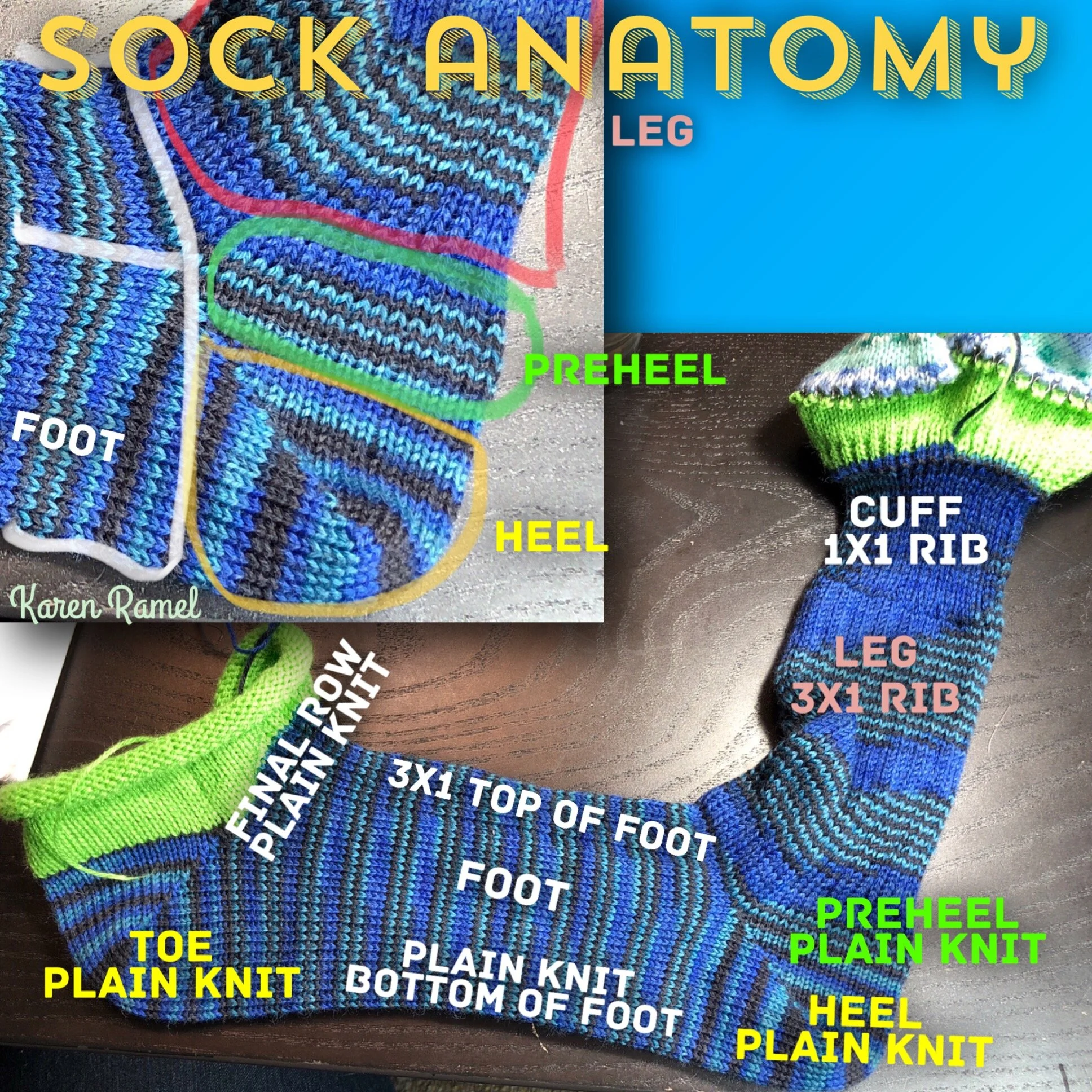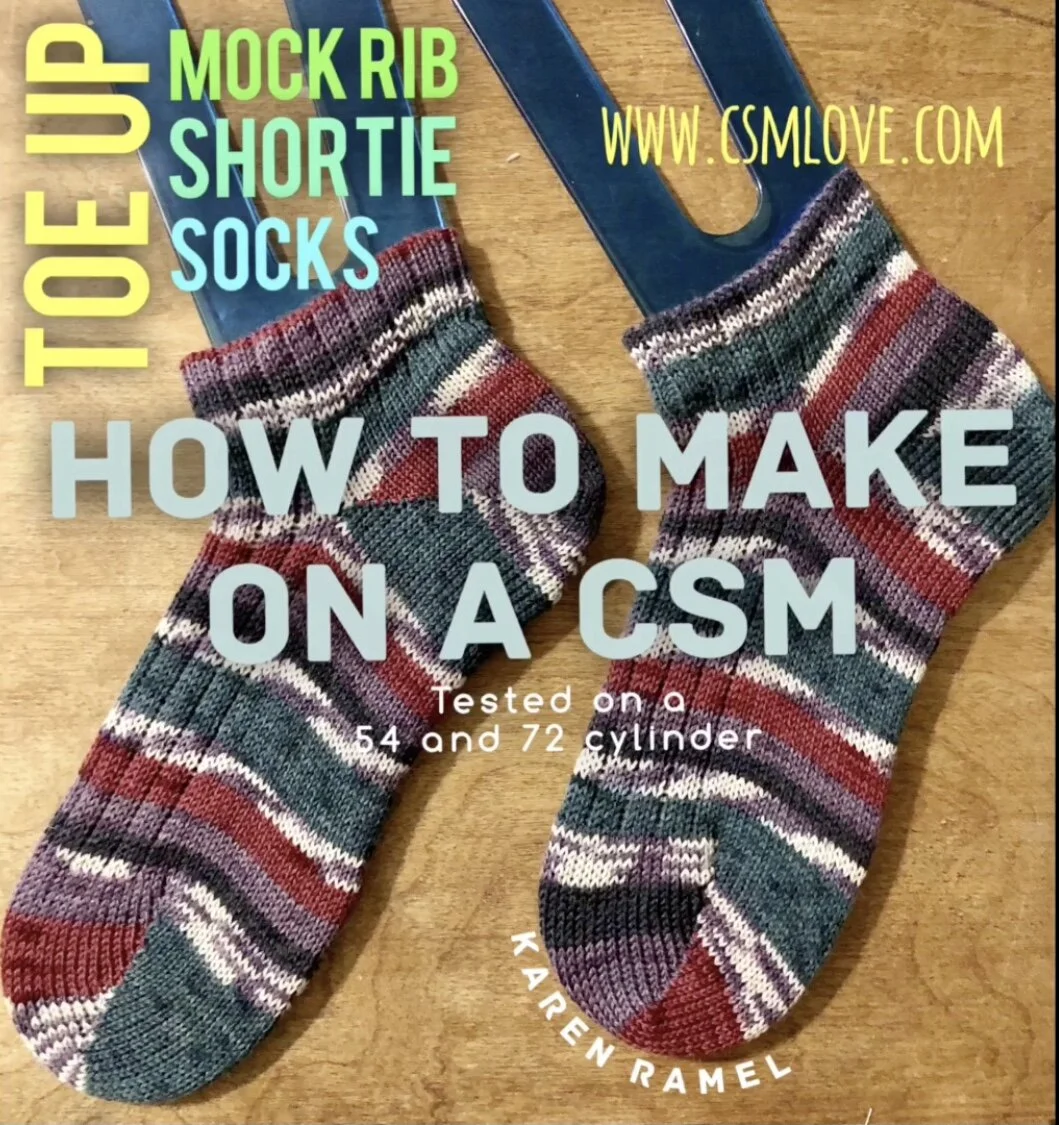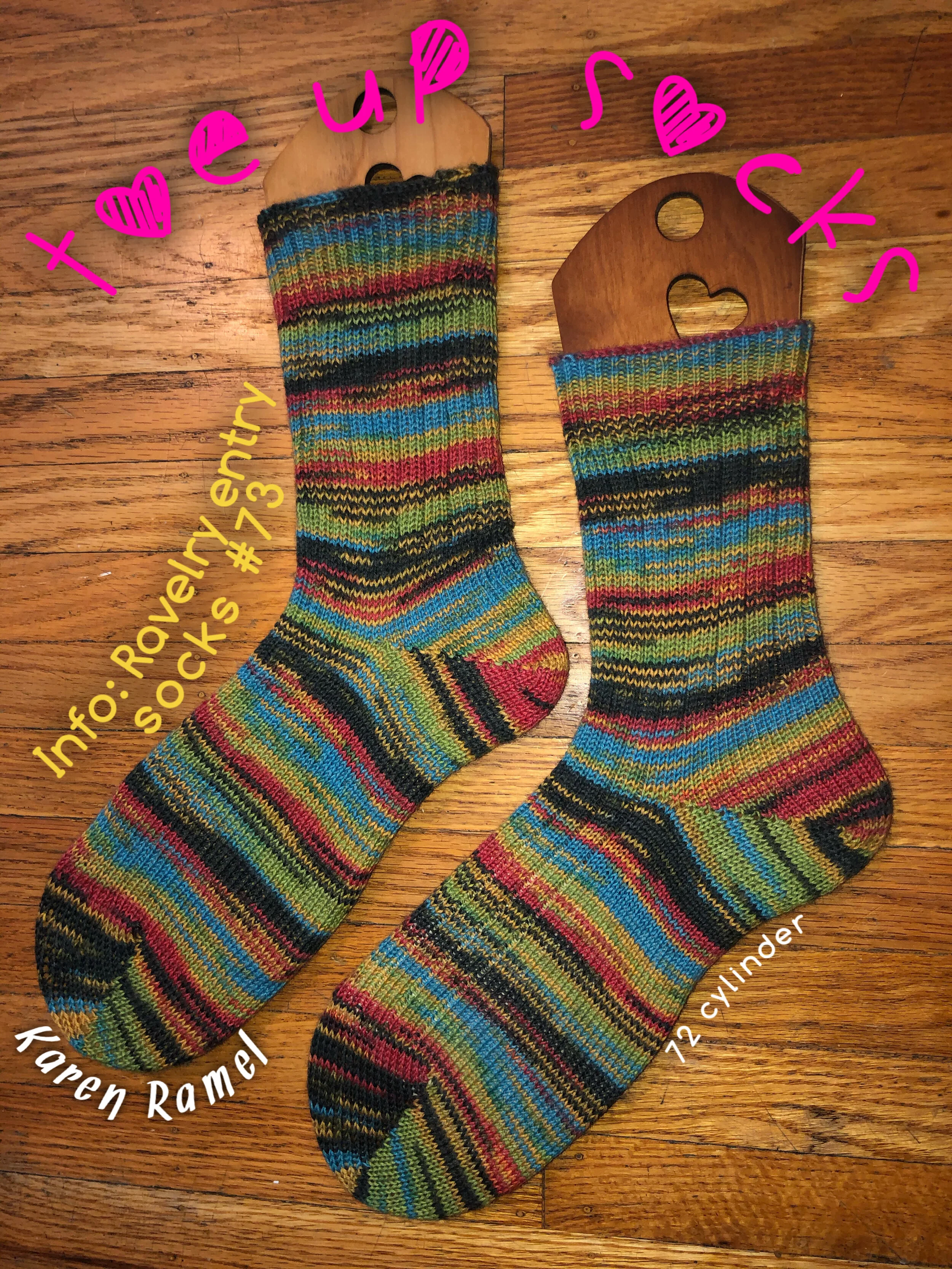Full Sock Toe Up
Patterns and Videos
This page is being newly re-organized. Your patience is appreciated.
Also see the other pages on the VIDEOS AND PATTERNS menu.
If you prefer to look at all my videos off my website see my YouTube channel
Looking for more videos? See my CSM Video hotlist page which is an organized category list of other YouTube CSM videos.
A frequent new CSM user question we see is how to reduce sock ankle/heel holes?
(Magic two words: Interlock Stitch)
There are actually a variety of methods to reduce these (sometimes referred to working an interlock stitch). Here are three ONE) instead of starting heel at halfway point, we raise needles from the 2nd needle behind each of the 3 and 9pm cylinder positions. On the first heel row we lift two needles on right (one behind halfway and one in front), work the row then do the same on the left. Working the heel this way then creates an interlock stitch at the intersection. Or TWO) when working the heel, finish one row shorter then where you started=creates interlock of sort OR THREE I’ve heard mention of wrapping the first needle on both halfway points (I’ve not done this).
See any of the sock videos on this page to see examples of these. ONE is covered on the Cuff Down Ribbed Sock. TWO is covered on the Cuff down Mock Rib Shortie Sock. See https://www.csmlove.com/my-youtube-sock-videos
Unless noted, most CSM information has been around since the beginning of time (see the vintage CSM manuals for proof - half pitch setting to make adult hats etc), and only because some persons in the csm community dislike others to provide the sharing of clear knowledge by anyone other than themselves, I’ve had to state this here.
SOCKS WITHOUT THE RIBEBR
MY TRINE TOE UP METHOD
Shareable YouTube link https://youtu.be/ONk79SHu0Cs
Toe Up Mock Rib Shortie Sock
Introducing a new Toe Up method that I call the TRINE Toe Up - without changing the stitch tension one can successfully work a Toe Up sock when using this method. This MY creation that I freely share with you, it has been tested successfully on a 54 and a 72 slot cylinder.
Trine refers to the THREE easy segments of this pattern - the PRE-TOE, TOE and POST-TOE.
This TOE UP pattern is the sibling to the CUFF DOWN MOCK RIB SHORTIE SOCK offered earlier in 2020. This is the SAME sock but worked from the TOE UP, featuring an OFF MACHINE manual HUNG HEM. This video reviews the segments of this sock worked both cuff down or toe up, reviews the reference points on the cylinder, how to make these yourself and also how to finish them afterward.
The great thing about ANY CLEAR CSM VIDEO is that you can easily plug and play with your preferred sock segments - by following this special Toe Up you could then choose to work the complete pattern and choose to do a different cuff.
| PDF - Toe Up Mock Rib Shortie Sock pattern | Ravelry Pattern | Ravelry project Socks #127 | The AUDIO 40 slot Cylinder Test Video |
SOCKS WITH THE RIBBER
TOE UP
TOE-UP ribbed sock with Ribber removal (Park & rest)
VIDEO is on my TO-DO list. :)
I already have the full instructions available from toe to cuff as I did these March 2020.
Often a question is how to work socks with different colour cuff/heels and toes
My approach is:
Here’s my video on Faux Russian Join
Start with first color and at (5 stitches prior) cut cuff yarn and faux Russian join to leg yarn. I have a slotted yarn carrier and topper so at when it’s 5 stitches prior to heel color start I thread in heel color (not cutting leg color but unthreading and leaving on inside of the cylinder as ribber is removed). I work heel and switch to foot yarn by cutting heel yarn and faux Russian joining 5 stitches prior to where foot begins (adding ribber back to machine as needed). I work foot and again 5 stitches prior cut the foot yarn and add toe yarn to finish toe then add scrap. Why 5 stitches before? So each tail is securely fastened on machine prior to it working (save off machine finishing on yarn tails). Example socks (forgot to switch yarn at toe).
This cone size is another reason why I’m a huge fan of the royal cone winder yarn winders https://www.csmlove.com/yarn-winders
Regarding sock fit and sizing. As you know sock sizing is more than sock foot length between heel and toe - it’s also diameter. All the above are affected by yarn used, machine settings, sock style (using heel spring throughout or in part or just on heel and toe, plain knitting, mock, ribbed, adding or reducing stitches with or without half pitch alignment). Obtaining your desired outcome isn’t something anyone can predict for you due to the variables above however by you noting all the settings etc and working through a sock you can adjust as needed. For example. I can easily make a cuff down ribbed sock with mock or real ribbing on top of the foot on my 54 for my 8.5 foot but I prefer the foot feel using the same yarn and settings on my 72 for ease of donning the sock itself - modifying the machine setting and sock design as needed for my own preference. Certainly I could use my 54 with my ribber set at half pitch to add cuff stitches allowing for an easier sock donning but with my settings and yarn I prefer a simple approach with mock or real rib (depending on sock style - Shortie or not). My preference on rows and stitches per inch is to work at a certain gauge for fabric feel.
If you were meaning children sizes we could remove needles in an even pattern (reducing diameter) and apply the heel spring throughout with or without Lycra (I don’t use Lycra).
Feel like being inspired by what I’ve created?
See MY SCRAPBOOK page - connected to my Ravelry projects. Click on images to see all sock detail/steps.
Want to see what I’m up to? See my INSTAGRAM | Have a question? EMAIL ME! karenramel@yahoo.com
Need HELP? SEE THIS PAGE
GO TO YOUTUBE FOR ALL VIDeos
Silent Videos?
I’ve been asked recently why some of my newer videos are silent.
This is my reply: A silent film is easier for me due to ambient noise (especially when so many fans are running on a hot day). I understand at an audio video helps English speakers however I also feel a silent video is more focused, can help English as a second language persons and can help those with hearing difficulties. I am not a fan of chatty videos. But I do appreciate that an audio video does help - I will see about adding audio in the final edit of my next video.




